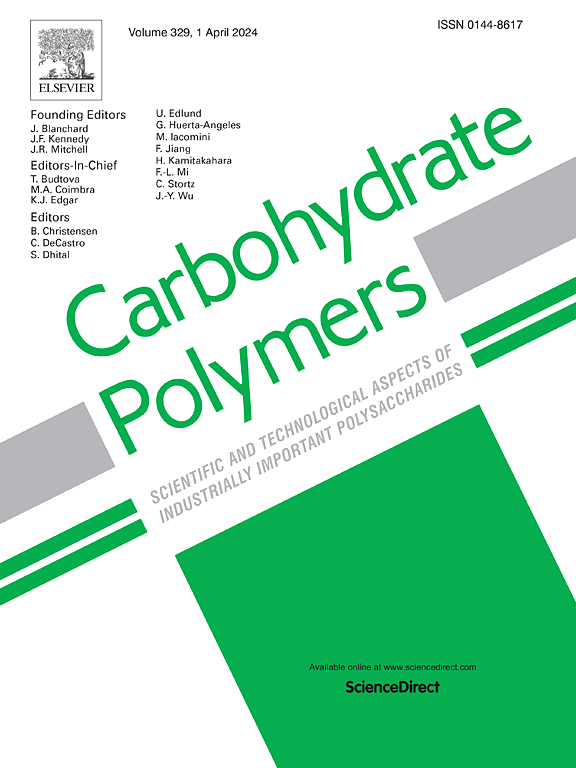Cellulose-based photo-curable chiral nematic ink for direct-ink-writing 3D printing
IF 12.5
1区 化学
Q1 CHEMISTRY, APPLIED
引用次数: 0
Abstract
3D printing technology is one of the most promising strategies for constructing topological functional materials. The development of functional inks is a core issue in the technical development of 3D printing technology. In this study, we engineered photonic crystal inks based on chiral nematic liquid crystals of cellulose derivative, i.e. hydroxypropyl cellulose (HPC), and applied it to direct-ink-writing (DIW) 3D printing technology. We modified hydroxypropyl cellulose by etherification reaction to obtain photo-cross-linkable water-soluble hydroxypropyl cellulose acrylate (HPCA) with different degrees of substitution (DS). We comprehensively explored the effect of the DS on the initial concentration of formed chiral nematic liquid crystal and quantitatively, analyzed the relationship between the DS and the helical structure of the chiral nematic structure. We used photo cross-linkable chiral nematic HPCA as photonic crystal ink to construct structure-color 3D objects of diverse shapes. The constructed structure-color objects showcase robust tolerance against temperature and acidic conditions (pH = 1). Moreover, the color of the constructed objects is independent of the observation angle. The photonic crystal ink based on chiral nematic liquid crystals of biodegradable polysaccharide materials is expected to have excellent market prospects in the fields of such as smart packaging and optical devices.

纤维素基光固化手性向列墨,用于直墨书写3D打印。
3D打印技术是构建拓扑功能材料最有前途的方法之一。功能油墨的开发是3D打印技术发展的核心问题。在本研究中,我们基于纤维素衍生物羟丙基纤维素(HPC)的手性向列相液晶设计了光子晶体墨水,并将其应用于直墨书写(DIW) 3D打印技术。通过醚化反应对羟丙基纤维素进行改性,得到具有不同取代度的光交联水溶性羟丙基丙烯酸纤维素(HPCA)。全面探讨了DS对形成手性向列液晶初始浓度的影响,并定量分析了DS与手性向列结构的螺旋结构之间的关系。我们使用光交联手性向列HPCA作为光子晶体墨水来构建不同形状的结构色三维物体。构建的结构色物体对温度和酸性条件(pH = 1)具有很强的耐受性。此外,构建物体的颜色与观察角度无关。基于生物可降解多糖材料的手性向列相液晶的光子晶体油墨在智能包装、光学器件等领域具有良好的市场前景。
本文章由计算机程序翻译,如有差异,请以英文原文为准。
求助全文
约1分钟内获得全文
求助全文
来源期刊

Carbohydrate Polymers
化学-高分子科学
CiteScore
22.40
自引率
8.00%
发文量
1286
审稿时长
47 days
期刊介绍:
Carbohydrate Polymers stands as a prominent journal in the glycoscience field, dedicated to exploring and harnessing the potential of polysaccharides with applications spanning bioenergy, bioplastics, biomaterials, biorefining, chemistry, drug delivery, food, health, nanotechnology, packaging, paper, pharmaceuticals, medicine, oil recovery, textiles, tissue engineering, wood, and various aspects of glycoscience.
The journal emphasizes the central role of well-characterized carbohydrate polymers, highlighting their significance as the primary focus rather than a peripheral topic. Each paper must prominently feature at least one named carbohydrate polymer, evident in both citation and title, with a commitment to innovative research that advances scientific knowledge.
 求助内容:
求助内容: 应助结果提醒方式:
应助结果提醒方式:


